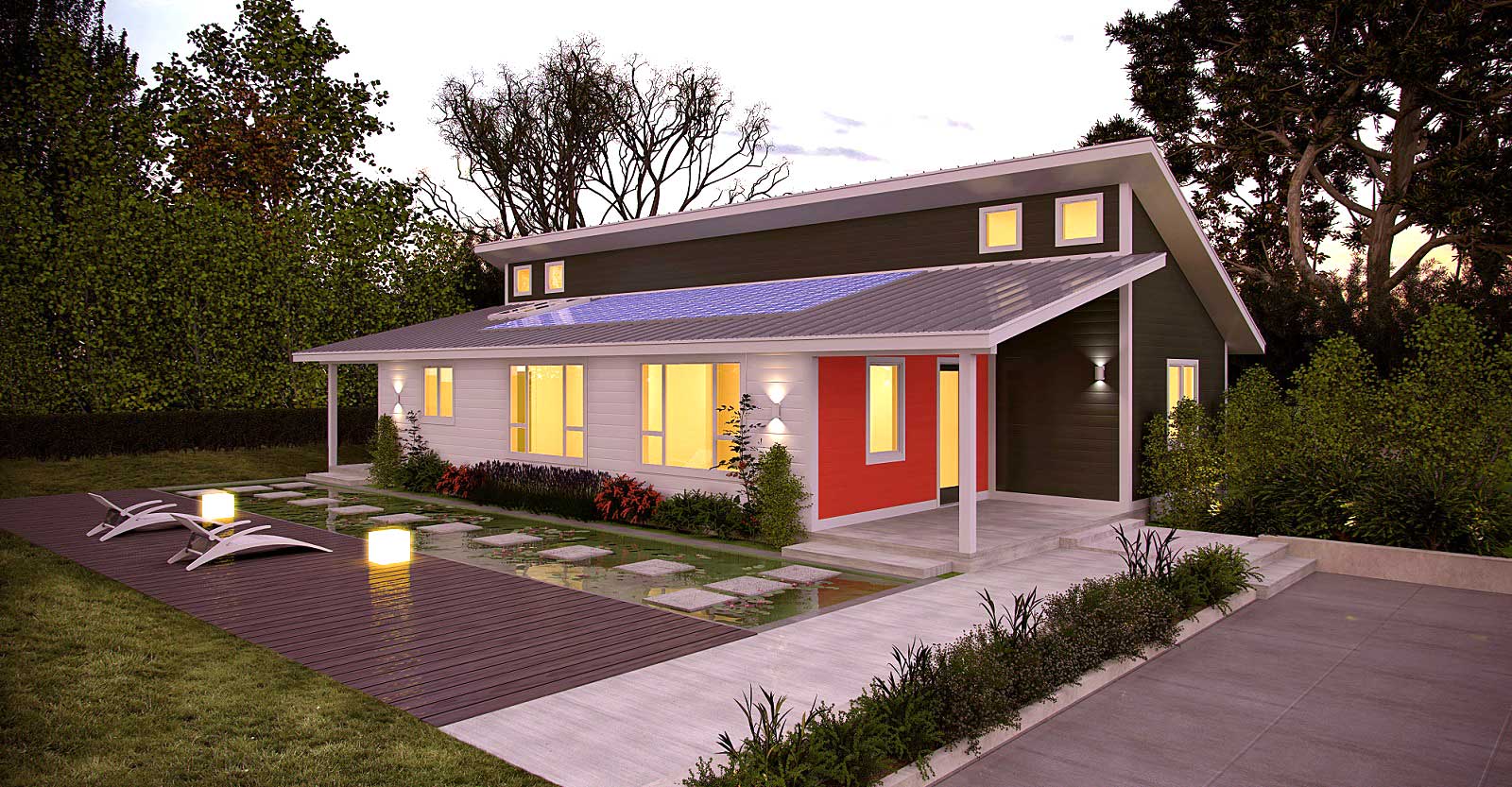Because zero energy homes are built to higher standards than most ordinary homes, they require greater attention to detail and often cost somewhat more. These two realities make zero energy homes especially well suited to the economies of scale, the speed of construction, and the precision industrial methods involved in modern prefab construction.
Economies of Scale
Prefabrication allows entire buildings or building sections to be constructed in a factory where an inventory of required materials lies close at hand, the weather always cooperates, and high-quality control standards improves precision. The resulting product can exceed the quality of site-built structures at lower cost, and with much faster progress on site.
Time is Money
Speed is one of the biggest advantages of prefab methods. Production in a controlled environment can proceed without weather-related delays typical of site-built homes, saving time and money. By shifting much of the work to a factory, the time needed at the site can be greatly reduced. Prefab prices can be competitive, although some costs, such as permits and fees, earthwork, foundations, paving and utilities, will be governed by local variables.
Unity Homes founder and renowned timber framer Ted Benson claims that they can build a zero energy home in 30 days that will last for 300 years. Unity Homes makes wall panels complete with dimensional framing, windows, plumbing, wiring, insulation, siding, and drywall. Using the efficiency of factory production, Unity erected a demonstration home for the 2015 Greenbuild conference in just three days. The 1,650 square feet home contained two bedrooms, two baths, and a host of Cradle to Cradle certified products. The company says the home would sell for $150 per square foot.
Pieces of a Puzzle
The most common component for prefabs are wall panels, but roof and floor panels are also available. One form of panelized construction uses structural insulated panels (SIPs), which are two skins of oriented strand board (OSB) glued to a core of rigid foam insulation. The result is a panel that supports itself. Various thicknesses are available depending on the insulation value needed. Window and door openings are generally cut at the factory. SIPs provide defect-free insulation and good air tightness which fit well in a zero energy building envelope. Premier SIPs produces panels ranging from R-15 to R-45, which are typical of the established SIPs industry.
SIPslock offers a different kind of SIP. These steel-skinned SIPs offer insulation value of up to R-50. They are impervious to insects and decay and the system comes with prefab structural members to meet seismic and wind-loading requirements.
Prefab Design, Zero Net Energy Use
In addition to Unity Homes, several companies across the country are now offering zero or zero energy ready prefabricated homes or prefabricated panel components that are suitable for zero energy construction. For example, panelized home builder Deltec recently launched a prefab zero energy home line called the Renew Collection. Using the zero energy approach, Renew homes are ready for the addition of solar electric panels that will generate all the power they need. Deltec offers a wide range of sizes and price points, starting with the 861 square foot Aster. Deltec sells fully-finished turnkey homes (starting at about $225,000) or shell-only packages for considerably less (starting at $65,000). Several of the Deltec zero energy models offer a double-stud wall option for northern climates.
The zero net energy goal is being achieved by many prefab companies through smart design and the addition of solar panels. Acre Designs takes a decidedly modern, high-tech approach. Blu Homes offer a number of modern designs ranging from a $265,000 tiny home to a $1.3 million showcase model. Build SMART is a panelized system with complete wall panels, including structure, insulation, weather barrier and windows. Other modular builders include S2A Modular, BrightBuilt Home, Method Homes, ArchiBlox, Hive Modular, Living Homes, CabinFever, and Nationwide Homes.
While stick builders tend to work in a limited geographic area, prefab builders can ship their product over longer distances. If you want a zero energy house, but can’t find a trained or experienced zero energy builder locally, visit the Zero Energy Project Builder’s Directory.
You may want to consider a builder who will utilize panelized or prefabricated products. Or if you have basic construction skills, you might consider buying a shell package to erect on your site and then complete the construction yourself. Either way, the availability, cost savings, quality control advantages, and speed of prefab homes is sure to help move zero energy homes into the mainstream of the home building market.

